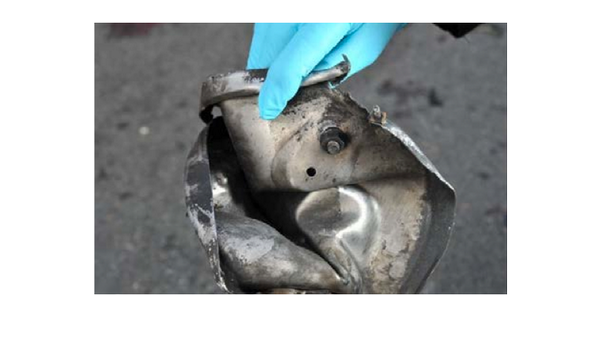Michael Dwyer/Associated Press
Neighbors at the home of the parents of Krystle Campbell, who died.
NY TIMES
The explosives that killed three people and injured more than 170 during the Boston Marathon on Monday were most likely rudimentary devices made from ordinary kitchen pressure cookers, except they were rigged to shoot sharp bits of shrapnel into anyone within reach of their blast and maim them severely, law enforcement officials said Tuesday.
[Officials tell CBS News that the bombs detonated at the Boston Marathon finish line on Monday were low-grade, improvised explosive devices containing nails and ball bearings. Doctors treating the wounded also report removing metal shrapnel, including BB pellets, from the victims. The bombs were made to look like discarded property, though it is still unknown whether they were placed in trash cans or on the sidewalk, officials say.]
The pressure cookers were filled with nails, ball bearings and black powder, and the devices were triggered by “kitchen-type” egg timers, one official said.
The resulting explosions sent metal tearing through skin and muscle, destroying the lower limbs of some victims who had only shreds of tissue holding parts of their legs together when they arrived at the emergency room of Massachusetts General Hospital, doctors there said.
Law enforcement officials said the devices were probably hidden inside dark nylon duffel bags or backpacks and left on the street or sidewalk near the finish line. Forensic experts said that the design and components of the homemade devices were generic but that the marking “6L,” indicating a six-liter container, could help identify a brand and manufacturer and possibly lead to information on the buyer.

New details about the explosives emerged as President Obama announced that the F.B.I. was investigating the attack as “an act of terrorism,” and made plans to come to Boston on Thursday for an interfaith service at the Cathedral of the Holy Cross.
Among the three dead was an 8-year-old boy, Martin Richard of Dorchester. The boy had been watching near the finish line and then moved back into the crowd; the blast killed him and severely injured his mother and his sister. Another spectator, Krystle Campbell, 29, of Arlington, Mass., also died Monday from injuries she suffered while watching the marathon. The third person who died was identified by Boston University officials as a graduate student there, and the Chinese Consulate in New York said that she was a Chinese national. The university is waiting for permission from the family before releasing her name. She was watching the race close to the finish line.
Boston is home to some of the most renowned medical institutions in the country. Doctors at Massachusetts General Hospital said that none of the hospitals were overwhelmed, allowing victims to be attended to in rapid order and saving lives in the process. Some victims were wounded so badly that even a delay of a few minutes could have been fatal, doctors said.
The scale of the attack and the crude nature of the explosives, coupled with the lack of anyone claiming to have been the perpetrator, suggested to experts that the attacker could be an individual or a small group rather than an established terrorist organization.
Nonetheless, a senior law enforcement official said that authorities were also looking into connections between pressure cookers and Al Qaeda in the Arabian Peninsula, the Qaeda franchise in Yemen, largely because the design of the explosive device was described in a 2010 issue of the group’s online English magazine, Inspire.
“The pressurized cooker is the most effective method,” the article said. “Glue the shrapnel to the inside of the pressurized cooker.” The article was titled “Make a Bomb in the Kitchen of Your Mom.”
Pressure cookers are designed to cook food quickly at high pressure. Pressure cooker bombs work when explosive powder is set off inside the pot and the resulting pressure builds until it exceeds the ability of the pot to contain it, creating a blast of tremendous force. Rudimentary explosive devices made from pressure cookers have been widely used in attacks in Afghanistan, India, Nepal and Pakistan, all countries where the cooking device is common, according to a Department of Homeland Security warning notice issued in 2010.
But they have occasionally turned up in attacks in the United States as well:Faisal Shahzad, an American citizen who attempted a car-bomb attack on Times Square in May 2010, had a pressure cooker loaded with 120 firecrackers among the improvised explosives in his S.U.V. The devices smoked but never exploded.
One brand of pressure cooker with “6L” on the bottom is made by the Spanish company Fagor, which, according to its Web site, is the fifth-largest appliance maker in Europe, with factories in six countries, including Spain, China and Morocco, and subsidiaries in nearly a dozen more.The company sells about 50,000 of the six-liter pots in the United States every year, said Sara de la Hera, the vice president for sales and marketing at Fagor’s United States subsidiary